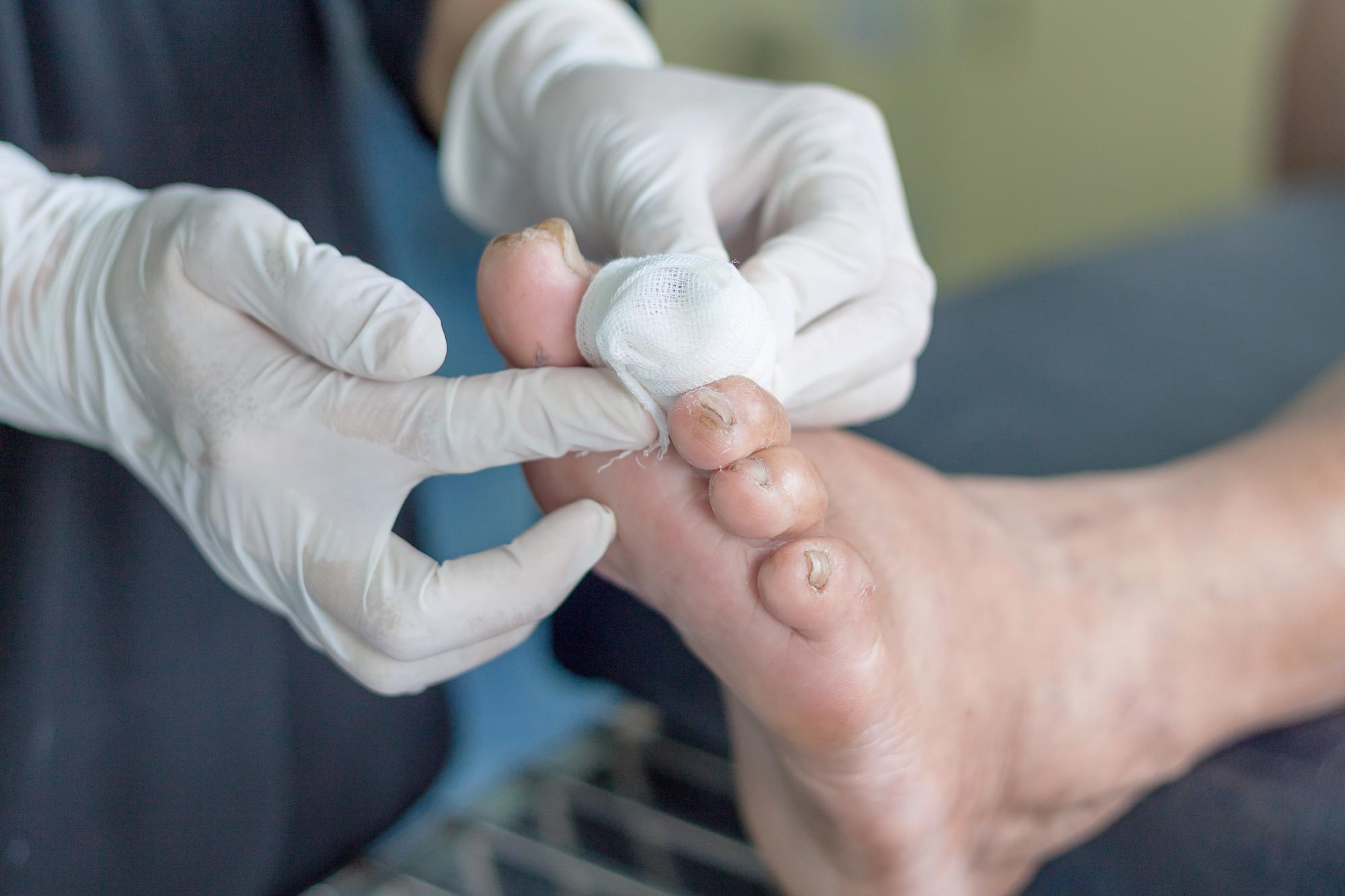Over one quarter (25 percent) of American senior citizens suffer from diabetes, a chronic illness that can cause a myriad of complications. A staggering 10 to 15% diabetics have leg and foot ulcers. If not treated and untreated, these seemingly harmless injuries can escalate and lead to diabetic foot amputation. Foot ulcers account for more than 80 percent of all amputations.
The management of diabetes is a complicated challenge that requires a holistic approach that goes beyond the control of glucose. In this effort, daily foot care is vital to preventing diabetes-related amputations.

Understanding the Landscape
It is a challenge to navigate through the maze of complications and diabetes. The prevalence of foot and leg ulcers among people with diabetes highlights the need for increased awareness and proactive care. The statistics are stark, and it is evident that understanding these complexities will be crucial in the fight against amputations.
The Amputation Conundrum
Amputation is a specter that has a lingering shadow over people who are struggling with diabetes. This is a personal reality that is more than the statistics. From a minor injury to the prospect that diabetic feet may require amputation It’s a path of great trauma.
Daily Footcare: A Shield to Amputation
The foundation of diabetes amputation prevention lies in daily foot care. This routine isn’t just about keeping your feet clean; it’s an extremely thorough method for the detection and treatment of potential issues before they escalate. From checking the feet for wounds, to making sure there is the proper moisturization of your feet, every step of this routine is an effective strategy in the battle against Amputations due to diabetes.
Vascular specialists: their role
Although vascular specialists are not involved in managing diabetes, they may play an important role in helping to reduce the effects of diabetes. The goal of treating patients is to increase blood flow to the lower extremities. This can alleviate pain and speed healing. By collaborating the goal is clear that we prevent amputations due to diabetes by decreasing the negative effects of this condition.
Strategies to Prevent Amputation
The maze of amputations in diabetes requires a blend of awareness, vigilance, and skilled intervention. The need to take a proactive approach is vital for individuals suffering from diabetes. Regular checkups with healthcare providers and vascular specialists can assist in detecting early signs of diabetes and help to intervene.
Understanding the Triggers: Leg Ulcers and Beyond
Leg ulcers, which are often precursors to more serious complications, require attention and knowledge. Understanding the causes that lead to leg ulcers is the most important step. If it’s due to nerve disease or poor circulation, or perhaps a combination of the two, identifying their root causes allows to make targeted treatments.
Education as empowerment
Giving people with diabetes understanding of the dangers and the preventive measures are essential. Initiatives to educate healthcare professionals and in the general community can help to bridge the awareness gap. Knowing the consequences of seemingly harmless wounds can initiate prompt action, possibly helping to avoid the necessity for diabetic foot amputation.
Private Battles or Collective Triumphs
The battle against amputations due to diabetes isn’t just an individual struggle; it’s a collective triumph. Support networks provide place to share experiences, gain knowledge from each other, and develop coping skills. The emotional impact of the risk of amputation is enormous, and a sense of community can offer comfort and strength.
In conclusion the road to diabetes, leg ulcers and the ever-present threat of amputation is multi-faceted. Care for your feet should be a priority, but the vascular specialist’s expertise is also crucial in preventing complications. People with diabetes who are aware, take preventive measures, as well creating a community of support, can navigate through the maze of complications with optimism and perseverance decreasing the risk of having to be amputation.